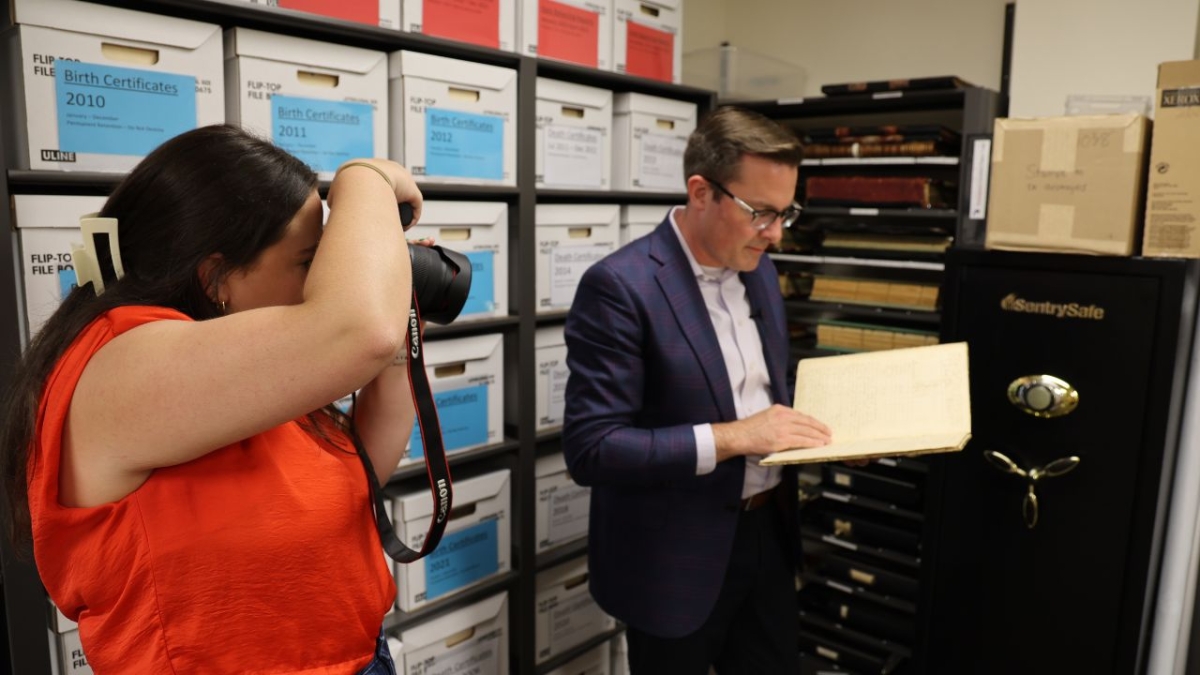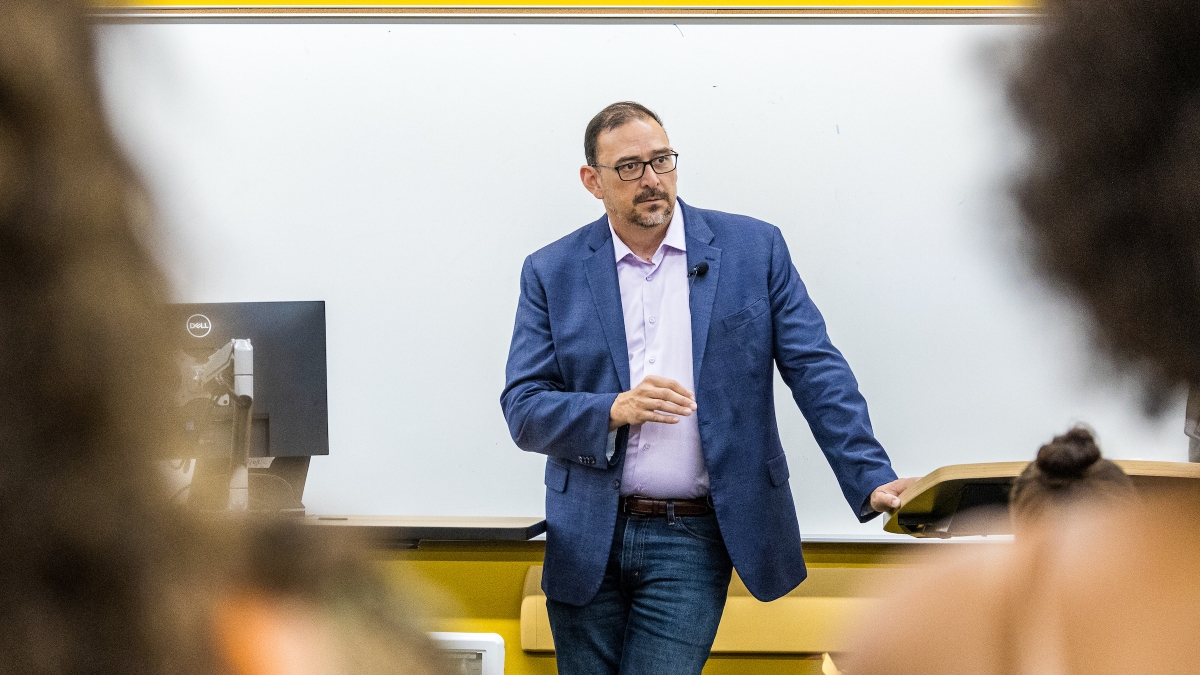Stories are a big part of sports: the underdog who triumphs with a last-second pass, the cursed team that finally wins the championship, the fan who swears by his lucky cap.
Those tales and rituals make spectators a part of the game, says Arizona State University sports historian Victoria Jackson — but sports are also a place for bigger story lines, ones of social justice and politics.
The lecturer in the School of Historical, Philosophical and Religious Studies at ASU shared some sports trivia and her take on player protests and why sports have such a transformative power on us as a society.
Question: We’re headed into the ASU football season Saturday. What might fans find surprising from the history of football — a rule that no longer applies, a particularly notable team that no one knows about anymore (Dayton Triangles, anyone?), that sort of thing?
Answer: My favorite early college football powerhouse team was the University of Chicago. If you know anything about the University of Chicago, you know that if you enter that campus and ask any random student how the football team is doing this season, the response would be “We have a football team?!” The school did abandon the game for 30 years, from 1939 to 1969, when it returned on a modest scale to compete in Division III.
But that early program? Total domination, absolute powerhouse. Founding member of what is now the Big Ten Conference? Check. First Heisman Trophy winner? Jay Berwanger. Check. An iconic, legendary coach? Amos Alonzo Stagg — who trained under none other than the “Father of American Football,” Walter Camp. Check.
And I haven’t even got to the best part about this nerdy, quirky school with a football team … and that is the (unofficial) fight songs:
Cosine, secant, tangent, sine,
Three point one four one five nine
Square root, cube root, BTU,
Sequence, series, limits too. Rah.
Or how about this one:
Themistocles, Thucydides
The Peloponnesian War
X-squared, y-squared
H2SO4
Who for? What for?
Who we gonna yell for?
Go Maroons!
I mean, come on! How are we not all Maroons fans with fight songs like these? Plus, they’re maroon, like us Sun Devils!
Q: Curses are a popular story for down-on-their-luck teams, from the curse of the Bambino to the Sports Illustrated cover jinx. Why do you think we like to surround sports with such legendary tales, both positive and negative?
A: For athletes, curses, jinxes and rituals are actually the exception to the rule. Those who have made it to that elitist-of-elite level rarely, if ever, believe anything other than their hard work and talent and confidence determines the outcome of their game.
But fans … that’s where things get interesting. Believing in rituals and curses is where fans get to enter the game — they transform passive spectators into active participants. If I forgot to wear my lucky socks and my car broke down and I had to take the bus the day of the big game … but my team won in an exceptional way after a cold streak and against the No. 1 team in the league? You better believe I’m burning those lucky socks and taking the bus to every future game my team plays. My actions contributed to the outcome that glorious day and I better not mess it up in the future! It’s our way to feel connected to our community of fans, and as if we’re part of the team, and play a role in team outcomes, in both victory and defeat.
Q: Athletes’ protests during sporting events get debated in the media and the public — increasingly recently when NFL players take a knee during the national anthem at games to protest police brutality and racial inequality. What is your view of sports as a way to make a social-justice statement?
A: Thank you for this question. My response is to call a big timeout and walk this one back. Because modern sport, and football in particular, was a political project in its origins. The first political project of sport was exclusivity: This sport — football — was born on elite college and boarding-school campuses and intended to train young white elite men attending the nation’s very best institutions of higher education to become the next generation’s political, military and business leaders. In other words, football was intended to further a political agenda off the field of play.
The second political project of sport, which is ongoing, is inclusivity — women and people of color working to gain access, and not just as players, but in all parts of the very large sports industry: coaches, owners, front-office positions, league leadership positions, officials, reporters, broadcasters, analysts and on and on.
Sports both reflect and influence the greater society in which they exist. And if I’m Richard Sherman or LeBron James or Maya Moore or Megan Rapinoe, and I’ve made it and see I have this potentially powerful platform? You know I’m going to use it to be the voice of the voiceless and amplify the issues of my people and my communities.
There are dozens of political messages consumed when fans watch sports — the gender politics of an NFL game; the conflation of militarism and patriotism and manliness and sport … I think social-justice causes make great additions to this list.
Q: Is this a recent phenomenon, or have sports historically been a place where societal issues have been confronted?
A: With an expansive definition of politics — attempts to construct or challenge systems of power — we see the politics built into the DNA of sports institutions. Organized baseball pushing out African-Americans and women at the turn of the 20th century? Political. Ideas about who belongs — and who does not — do not stay in the sport space; they leach out and influence ideas about “natural” ability in the broader society. In 1946, much of the debate surrounding Jackie Robinson’s potential in the majors rested with pseudoscientific racist ideas that black players were inherently worse athletes than white athletes. In the 1970s, a doctor testifying in the Little League lawsuits stated under oath that girls playing baseball who are hit in the chest will develop breast cancer. These wrong ideas are so powerful they have the ability not just to shape popular opinions, but so-called objective medical science.
When we think about sport in this way, the idea that athletes bring politics to sport has it backwards. A better way to frame this: Athletes are bringing different politics to the politics within sport. Let’s take the iconic image of the Mexico City 1968 Olympic Games: Americans Tommie Smith and John Carlos on the Olympic medal stand. When the national anthem commences, they each raise a black-gloved fist in the air, transforming into symbols of black pride and power and amplifying the black freedom movement on a global stage. International Olympic Committee President, and American, Avery Brundage scolds them for bringing politics to sport and demands the U.S. Olympic Committee suspend them from the team and kick them out of the Olympic village. Just a month earlier, however, Brundage was advocating strongly for apartheid South Africa to rejoin the Olympic family and compete in Mexico City, in violation of his own organization’s rules. We don’t see the politics of the privileged, only the politics of those challenging privileged authority.
I am teaching a course right now called “The Mexico City 1968 Olympics in Global Context,” and students are enjoying this approach to history, using this sporting moment as a thematic launch pad to explore the long ’68The term “long ’68,” also the title of Richard Vinen’s book, is to acknowledge that while the calendar year 1968 is important, the “’68 moment” really spans a longer period of time depending on the time and place in the world. around the world.
Q: Why might sports have the ability to move the needle on social-justice issues, in a way that’s different from, say, “regular” protests at the capital?
A: Sports hold this transformative power because they’re about people, and about bodies, and, most of all, they make us vulnerable. All of us. It’s in the space of vulnerability and strength and power and times of joy and times of pain that we hold the capacity and potential to see the humanity in each other. And that’s so powerful.
Top photo: History lecturer and runner Victoria Jackson poses for a portrait at Papago Park. Jackson focuses on the history of sports within the School of Historical, Philosophical and Religious Studies at Arizona State University. Photo by Deanna Dent/ASU Now
More Law, journalism and politics

ASU's Carnegie-Knight News21 project examines the state of American democracy
In the latest project of Carnegie-Knight News21, a national reporting initiative and fellowship headquartered at Arizona State University’s Walter Cronkite School of Journalism and Mass Communication…

Arizona secretary of state encourages students to vote
Arizona Secretary of State Adrian Fontes looked right and left, taking in the more than 100 students who gathered to hear him speak in room 103 of Wilson Hall.He then told the students in the Intro…

Peace advocate Bernice A. King to speak at ASU in October
Bernice A. King is committed to creating a more peaceful, just and humane world through nonviolent social change.“We cannot afford as normal the presence of injustice, inhumanity and violence,…
